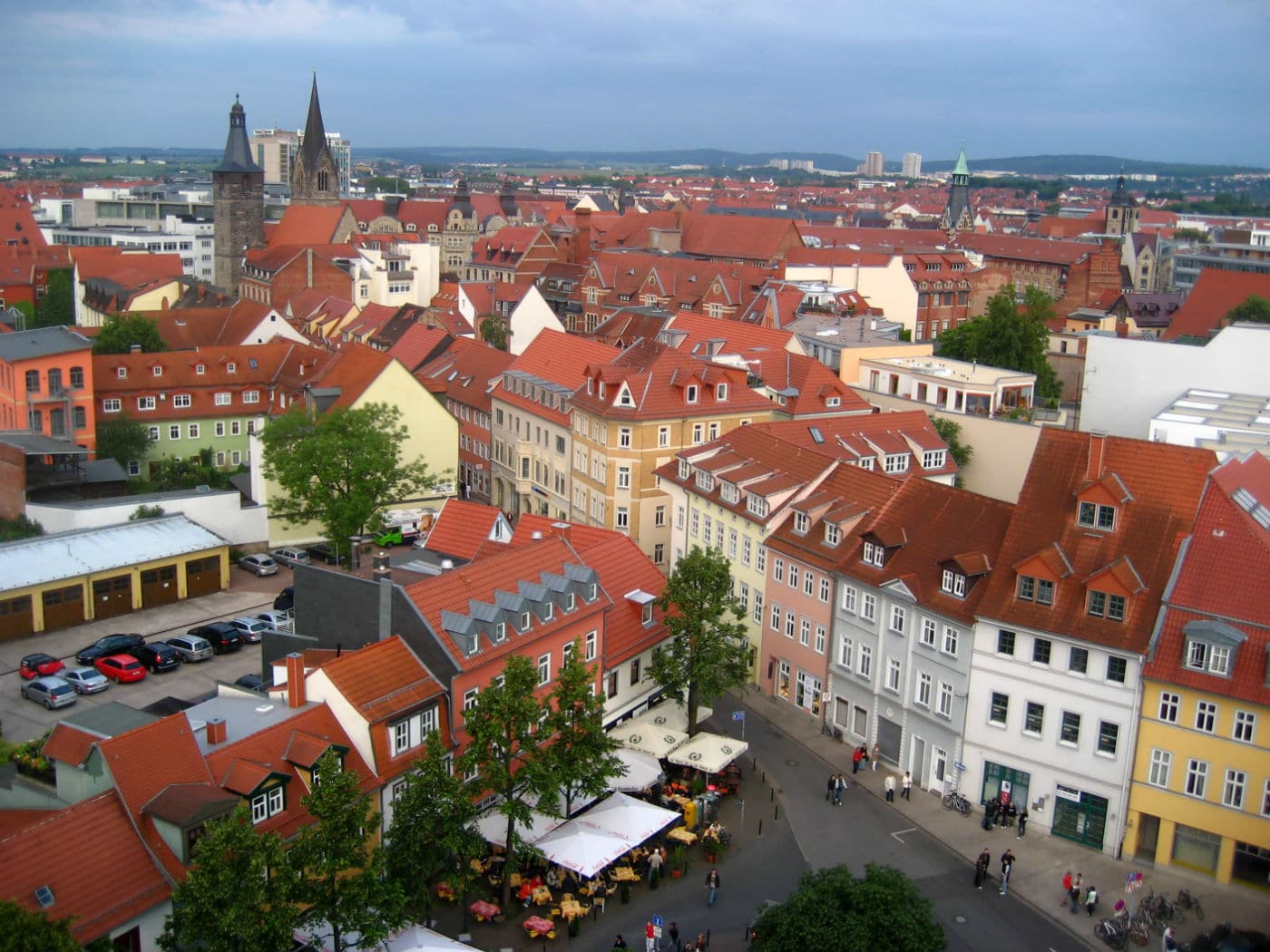Located in the center of Germany, the federal state of Thuringia has plenty to attract tourists of all ages, from rolling hills to nature preserves with scenic hike-and-bike trails, from relaxing spas and health resorts to winter sports centers for downhill and cross-country skiing. But if you’re a “city person” at heart—someone who loves historic buildings, interesting museums, and fine food and drink—then head for the cities and towns of Thuringia, many of which radiate an “Old World” ambience.
Start in Erfurt, Thuringia’s centuries old capital and a pleasant city of 200,000 people. Since Germany’s reunification it’s become a popular tourist destination, particularly for travelers interested in its rich past. And like many cities in the former “East,” hotel and restaurant prices are lower than in many western parts of Germany.
The compact size of Erfurt’s Altstadt (Old Town) is perfect for touring on foot. Start at Erfurt’s famous landmark, the medieval Krämerbrücke (Merchant’s Bridge), the longest “inhabited bridge” in Europe. The arched stone bridge is lined on both sides with little two and three story half-timbered buildings housing a variety of craft workshops and tiny stores selling pottery, paintings, marionettes, antiques, food and wines from Thuringia, exquisite handmade chocolates, and traditional blue-and-white hand-printed fabrics.
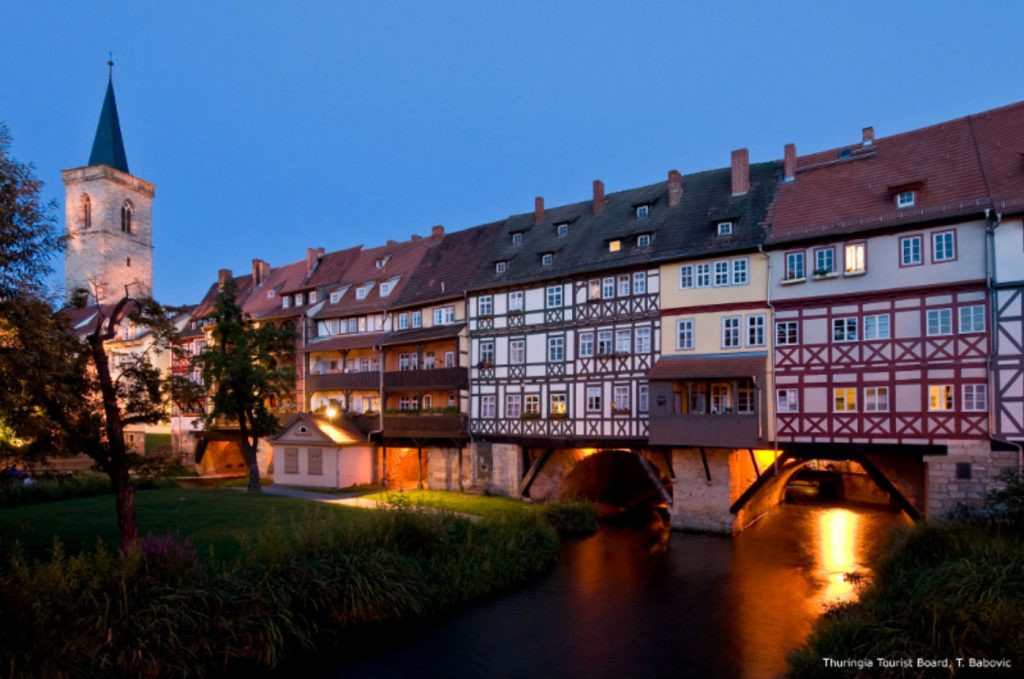
In the Middle Ages, Erfurt became rich from producing a blue dye highly prized in Europe. Its wealth attracted powerful churchmen, politicians, and merchants whose influence on the architecture of the city can still be seen, from the Petersburg Citadel, Cathedral of St. Mary, and adjacent Church of St. Severus, all located in the highest part of the town, to the Fish Market Square with its neo-Gothic Town Hall.
Many people travel to Erfurt to walk in the footsteps of historic figures who resided there, including the religious reformer, Martin Luther. You can still see the university where he studied, the 13th-century Augustinian Monastery where he became a monk, and the cathedral where he was ordained a priest. Every year on November 10, Erfurt’s St. Martin Festival on the Domplatz (Cathedral Square) celebrates his birthday together with remembrance of the Catholic St. Martin for whom he was named. On October 31, 2017, Erfurt will celebrate the 500th anniversary of the start of the Protestant Reformation. And in December, the Cathedral Square is always the site of Erfurt’s Christmas market, with more than 200 booths selling traditional crafts, hot spiced wine, Thuringer sausages, Christmas cookies, and other holiday treats.
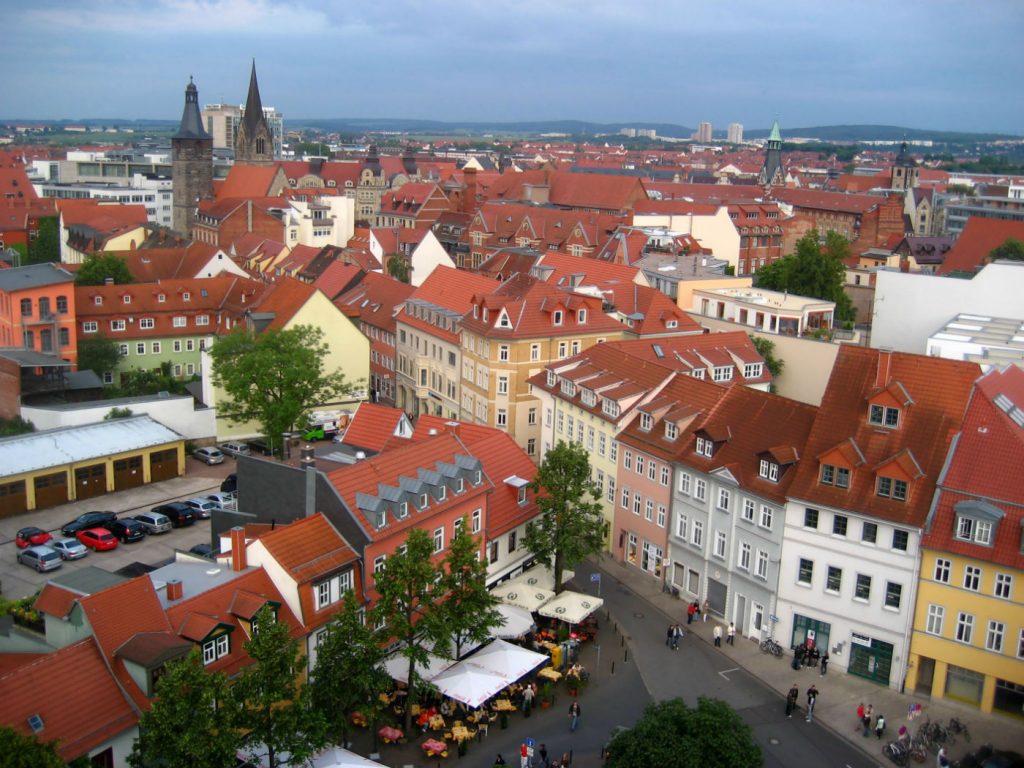
Other notables who spent time in Erfurt include artists, musicians, and writers, from Lucas Cranach to Johann Sebastian Bach and Johann Wolfgang von Goethe. Exhibits about Erfurt’s rich secular, ecclesiastical, and cultural history can be seen at many venues, including the Municipal Museum, housed in a fine Renaissance building; the Museum of Thuringian Folklore, one of the largest in Germany; the excellent Anger Museum, with its collection of arts and crafts; and the recently discovered Old Synagogue, one of the best preserved synagogues in Europe, with its treasure trove of more than 3,000 gold and silver coins, jewelry, and items from the 13th and 14th centuries.
Erfurt is also a good base for excursions to places nearby. Take a tram from the city center to the egapark, a huge park on the edge of town, with the largest ornamental flowerbed in Europe, a rose garden, Japanese rock garden, butterfly house, and several hothouses devoted to specific kinds of plants. Schloss Molsdorf, also on the outskirts, is a late-Baroque castle known as the “Versailles of Thuringia.” And not far away, in the town of Holzhausen, is Germany’s first Bratwurst Museum!
Two other famous cities in Thuringia are Eisenach and Weimar, both known for their importance during different historical periods. In the late Middle Ages, Luther lived in Eisenach on several occasions. Today you can visit the half-timbered house, now the new Luther House Museum, where he boarded while attending school, step into the former room where he studied and slept, and learn much more about Luther and the Protestant Reformation at the modern multi-media exhibition “Luther and the Bible”. Not far away is St. George’s Church where Luther sang in the choir and where Johann Sebastian Bach was baptized. Over a period of 130 years, members of the Bach family played the organ at that church, which offers free organ concerts Monday through Friday at 11 a.m.
Bach was born in Eisenach in 1685, and went on to compose some of the world’s most beloved classical music. Visit the house where his family lived and where you can now hear 30-minute concerts played on period instruments several times a day. Next door is the ultra-modern Bach museum, with 250 exhibits about Bach’s life and work, as well as listening stations with recordings of his music. Other sights in Eisenach include the Thuringian Museum, which has a fine collection of porcelain, and the Automobile Museum whose classic car collection includes many of the Wartburg autos that were manufactured there.
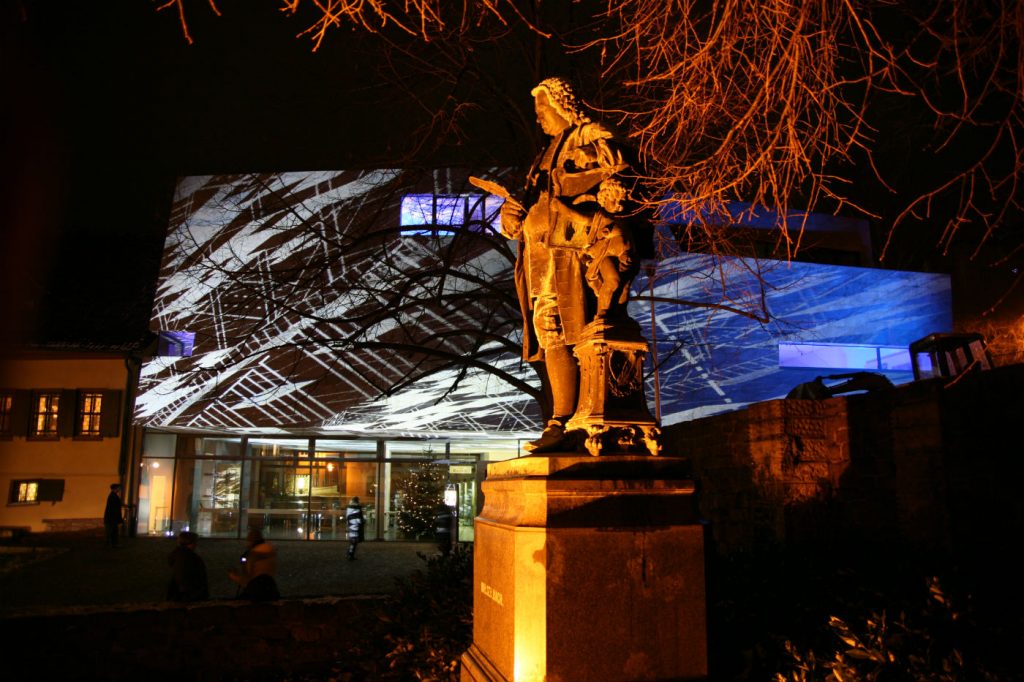
Every year thousands of people travel to Eisenach to visit Wartburg Castle, the massive medieval fortress high on a hill just outside the town. A UNESCO World Heritage Site, it’s where Luther translated the New Testament into German after publically challenging the powerful Catholic Church. Visit the castle’s ornate interior, see the simple room where Luther worked, and if you visit in December you can enjoy a special medieval Christmas market in the courtyard. From May to November, 2017, the castle will also host a national special exhibition on “Luther and the Germans,” featuring more than 300 paintings, prints, books, sculptures, and other important objects from five centuries of Germanic history.
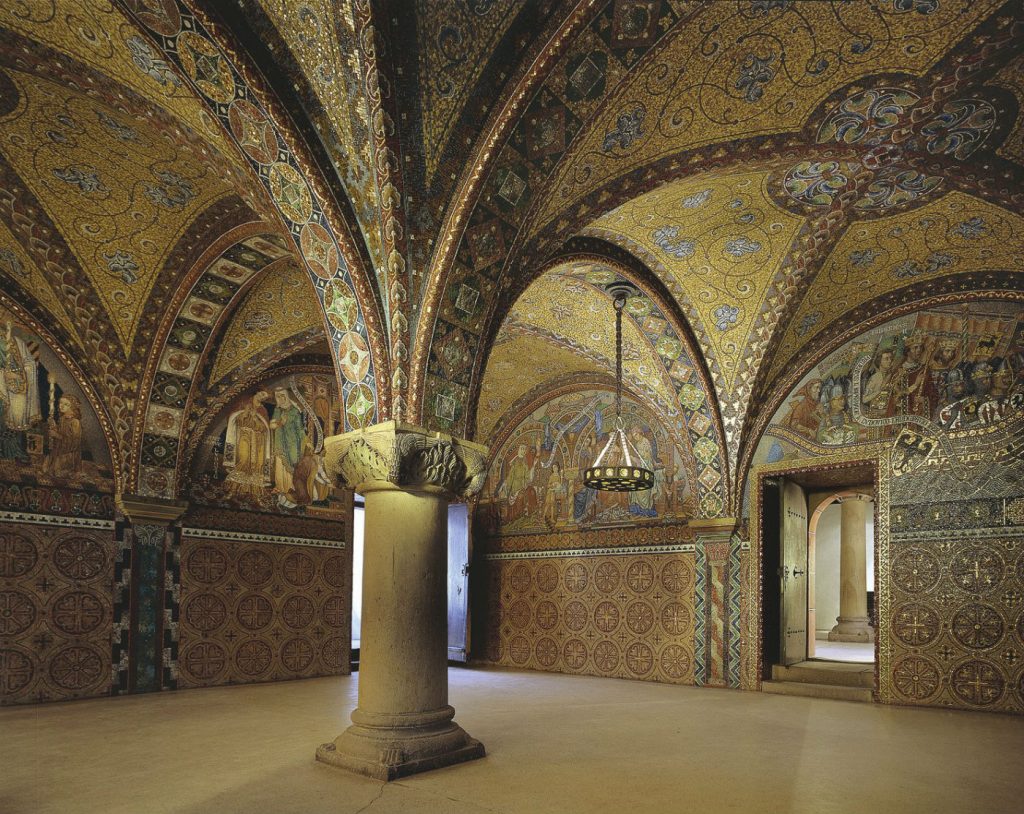
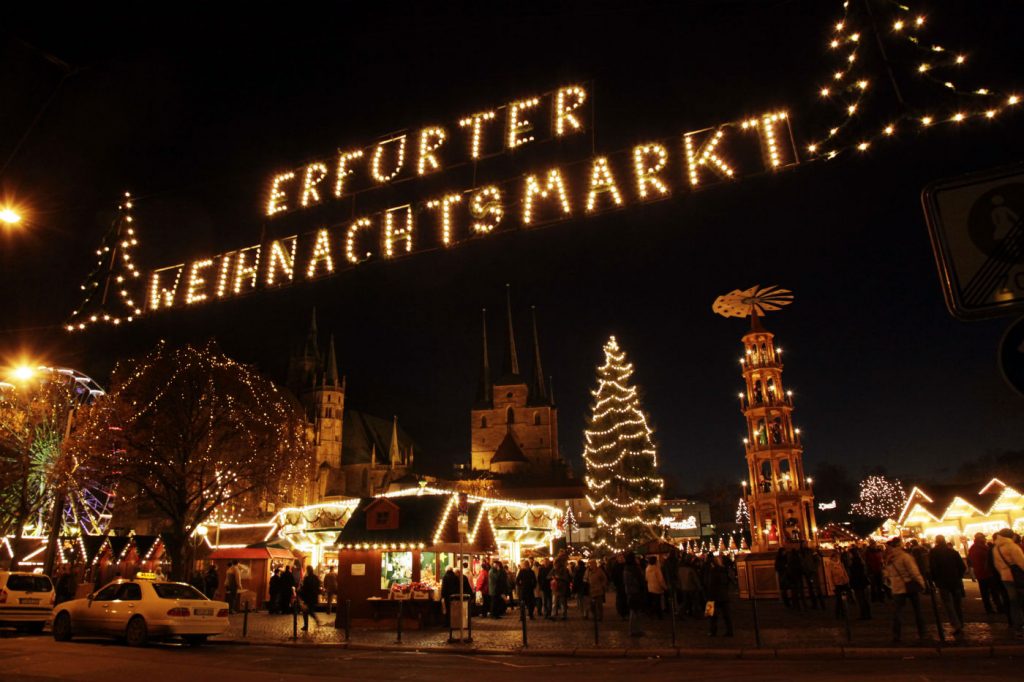
Weimar is the third city whose name resonates in German history, art, music, and literature. The capital of Germany from 1919 to 1933, is a major cultural center that rates several entries on UNESCO’s list and attracts millions of tourists. Luther visited in the 1500s, and Bach lived there from 1708 to 1717. Today you can also see the historic houses, archives, and other sites associated with Weimar’s notable residents from the 18th through 19th centuries, including the writer Friedrich Schiller, the composer Franz Liszt, the philosopher Friedrich Nietzsche and Johann Wolfgang von Goethe, Germany’s great writer and philosopher. His authentic home, a charming garden house, and the unique exhibitions of the Goethe National Museum all draw Goethe lovers to the town.
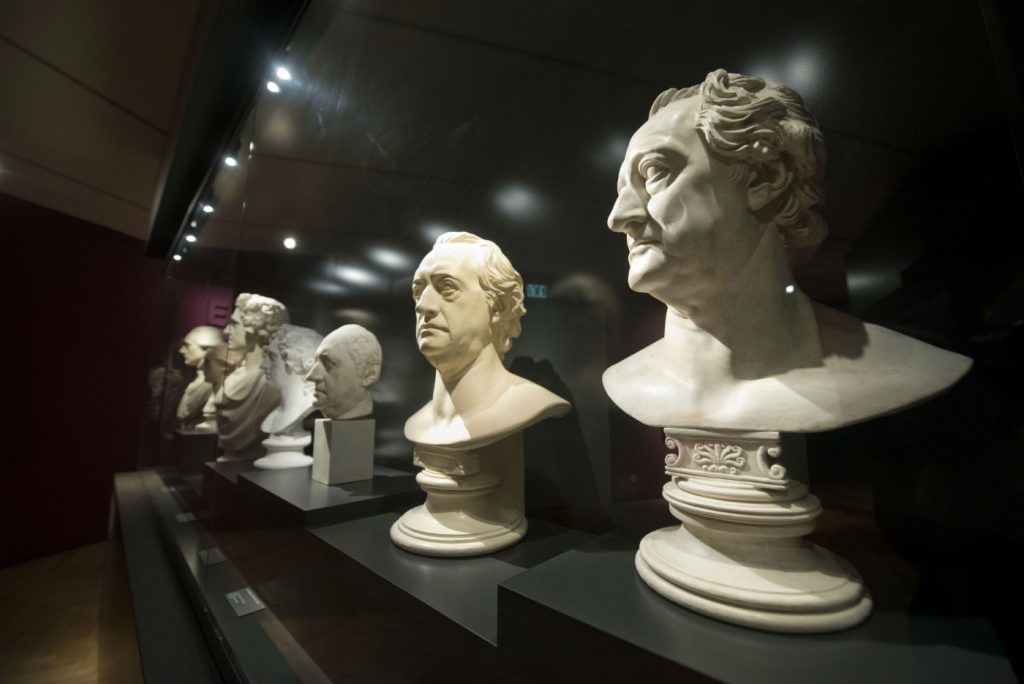
The Palace Museum, located in three wings of the former residential palace, contains an impressive collection of fine and decorative arts, with paintings by Lucas Cranach and Max Beckmann, classical sculptures, entire rooms of antique furniture, and even the piano that Franz Liszt played. Other notable collections are found in the Belvedere Palace, Wittums Palace, New Museum, and the Tiefurt Mansion. In the 20th-century, Weimar was home to the modern art, craft, and architectural movement known as Bauhaus, founded by Walter Gropius in 1919. Exhibits in the Bauhaus Museum showcase the creative work of the Bauhaus school and the famous artists who taught and studied there.
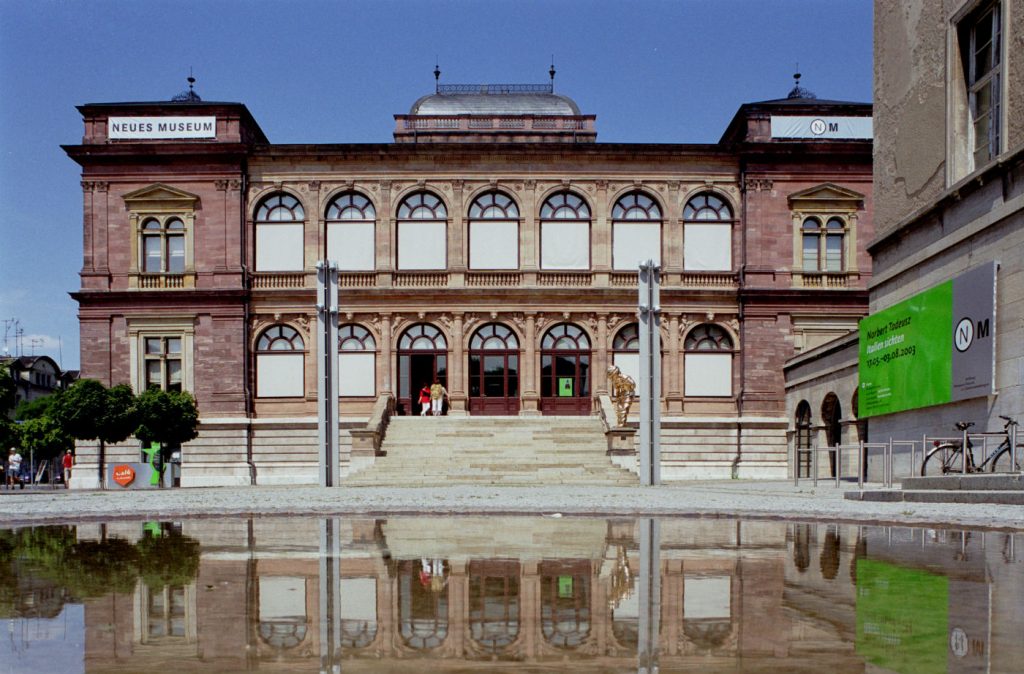
Weimar’s Market Square is the site of a colorful Easter market in spring, a wine festival as part of the Weimar summer, and part of Weimar’s famous Onion Market in October, a local fair dating back to 1653, which now attracts more than 300,000 visitors to the annual three-day festival. And from the end of November through the first week of January, several of the city squares are decked out with white lights, food stands, and craft stalls for Weimar’s annual Christmas market.
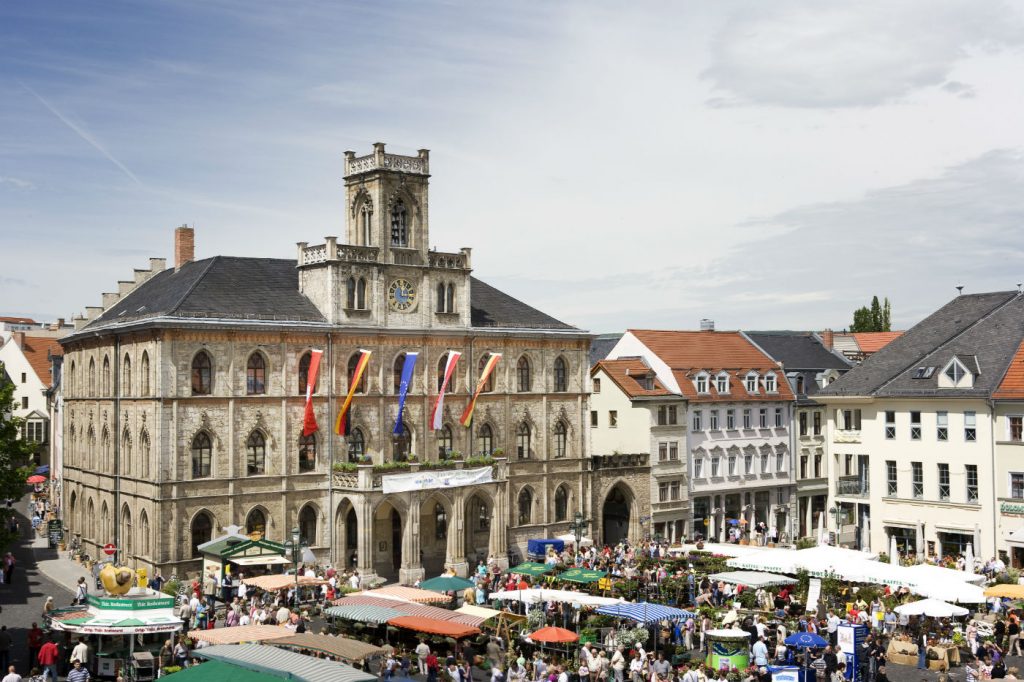
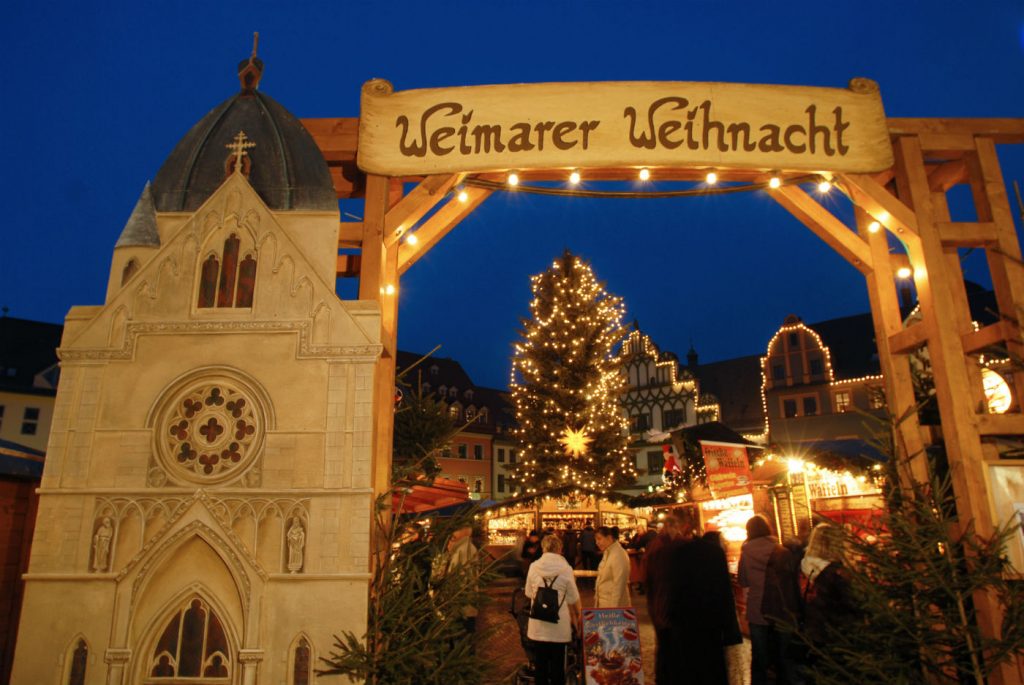
Finally, for a change from the larger urban areas, why not look outside the “Big Three” of Erfurt, Eisenach, and Weimar and finish your tour of Thuringian cities with side trips to the smaller towns or the Thuringian forest?
The towns of Gera and Schmalkalden boast important Renaissance-era buildings in their town hall and Wilhelmsburg Castle, respectively, while Gotha has the Friedenstein Castle, one of the largest Baroque castles of its time with a valuable Cranach Galery. Mühlhausen has many handsome half-timbered houses enclosed within its 3-kilometer-long city wall, as well as a number of architecturally important churches. Nearly 200 years ago, the first glass Christmas tree ornament was made in the tiny town of Lauscha in southern Thuringia, a glass-blowing center for four centuries. Jena is until now an important glass-producing center with the worlds oldest planetarium and a major university town where both Goethe and Schiller once lived.
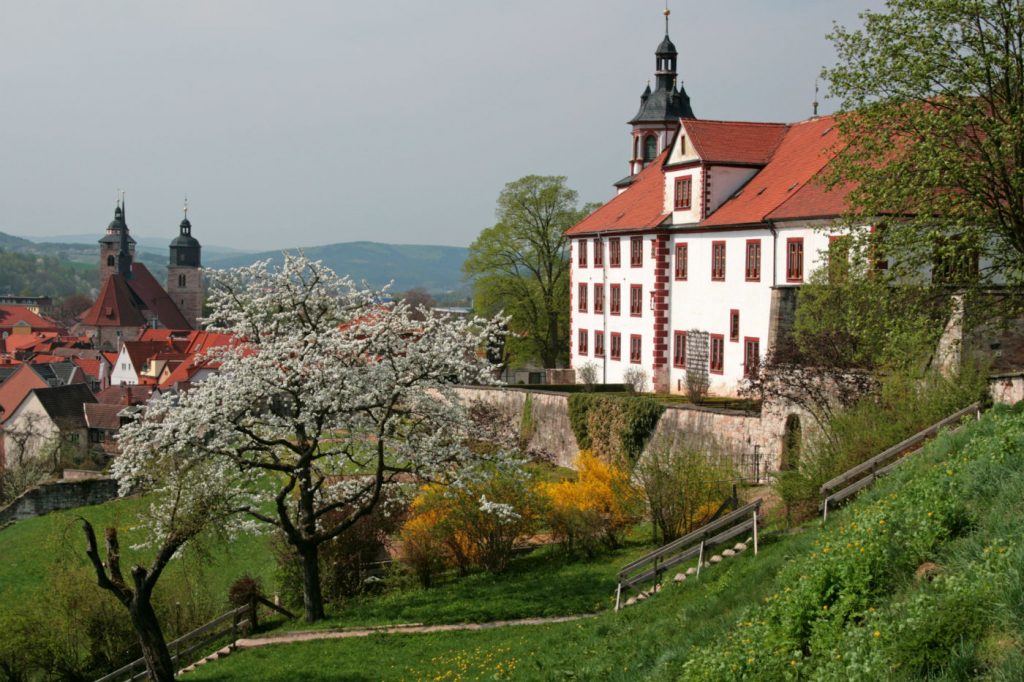
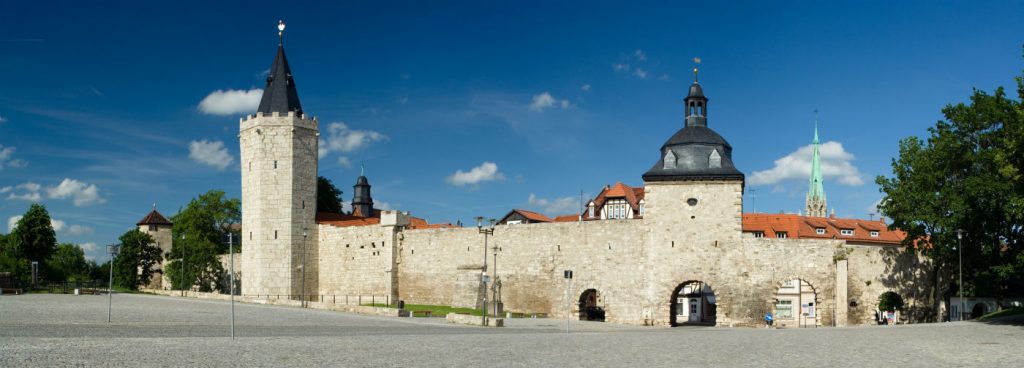
Saalfeld features a medieval town center, the former palace of Queen Victoria’s grandparents, and the beautiful “Fairy Grottoes,” colorful caverns listed in the Guinness Book of Records. Eleven sites associated with the Reformation are located in Nordhausen, a town also widely known for its Nordhäuser Doppelkorn, a potent liquor that’s been distilled there since the 1500s. The pleasant spa town of Bad Langensalza is one of several health resorts in Thuringia and a gateway to the UNESCO World Nature Heritage Hainich National Park and every year on the first weekend in July, the little town of Rudolstadt beats to the rhythm of Germany’s largest folk music festival.
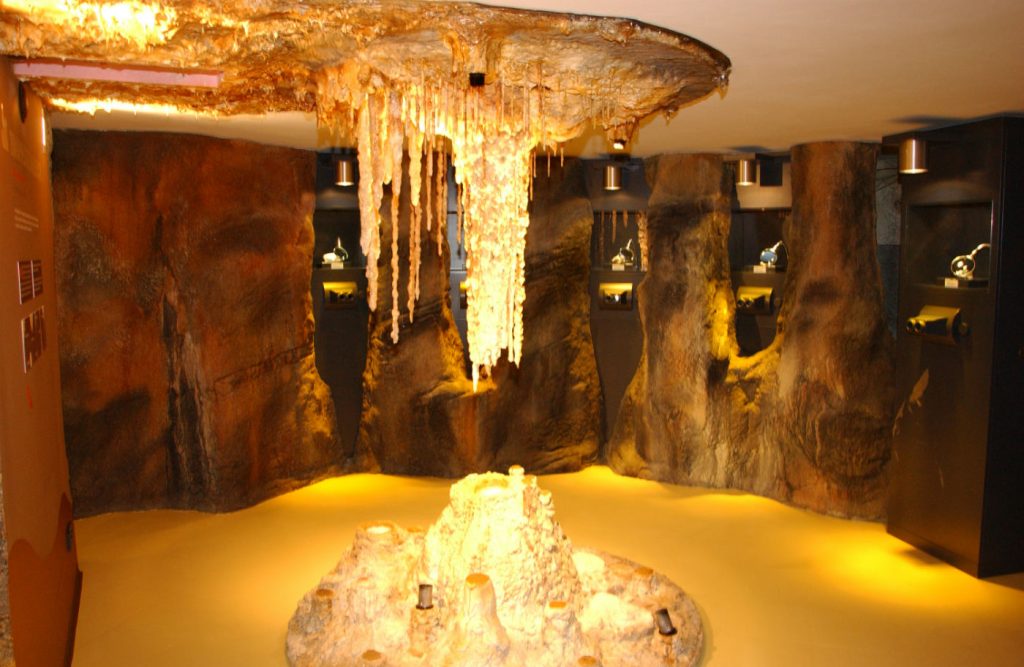
So, whether it’s the charming trio of Erfurt, Eisenach or Weimar or one of the smaller towns of Thuringia, the next time you go to Europe, discover the many attractions, old and new, of this fascinating part of Germany.
Where to Stay:
Erfurt
Hotel Zum Norde – Set in a restored 19th-century townhouse, this refined hotel is a short walk from the train station and Erfurt Cathedral. Weitergasse 26, Erfurt; +49 361 56800; www.hotel-zumnorde.de
Arcadia Hotel am Dom – This modern glass front hotel makes a point of being stylish yet the personalized service makes it seem old world; perfect for discovering Erfurt. Theaterplatz 2, Erfurt; +49 361 644 50; arcadia-hotel.de/erfurt/the-hotel.html
Radisson Blu Hotel Erfurt – Offers an unmatched aerial perspective of Erfurt’s historic cathedrals and medieval architecture. Juri Gagarin Ring, 127 D, Erfurt; +49 361 55100; www.radissonblu.com/en/hotel-erfurt
Eisenach
Hotel auf der Wartburg – Thirty-seven individually designed and decorated rooms, the award-winning “Landgrafenstube” or the vitality area “Jungbrunnen” will captivate you. Auf der Wartburg 2, Eisenach; +49 3691 797 0; www.wartburghotel.de/en/
Steigenberger Hotel Thüringer Hof – Stay in the heart of the old city, with easy access to the market or station. Karlsplatz 11, Eisenach; + 49 6995 799 725; www.steigenberger.com/en/hotels/all-hotels/germany/eisenach
Hotel Kaiserhof – This classic hotel is set in an ornate brick building from 1897. Wartburgallee 2, Eisenach; + 49 3691 888 90; www.kaiserhof-eisenach.de
Weimar
Hotel Elephant – With a perfect location on the market square and near all the sights, this hotel has been a Weimar favorite for some 300 years. Markt 19, Weimar; + 49 364 380 20; www.hotelelephantweimar.com
Dorint Am Goethepark Weimar – Excellent location near the Goethe House, comfortable rooms, wellness amenities. Beethovenplatz 1-2, Weimar; + 49 364 387 20; www.hotel-weimar.dorint.com/de/
Hotel Kaiserin Augusta – This elegant hotel is set in a building that dates to 1867. Carl-August-Allee 17, Weimar; + 49 3643 2340; www.hotel-kaiserin-augusta.de
Where to Eat:
Erfurt
Köstritzer zum Güldenen Rade – Enjoy the famous Thuringian potato dumplings or have a locally brewed Köstritzer Schwarzbier at the restaurant or relax in the beer garden. Marktstraße 50, Erfurt; +49 361 561 3506; www.zum-gueldenen-rade.de
Zum Rebstock –Exquisite international cuisine in a 500 year old mansion. The lobby bar is a favorite. Altstadt, Futterstraße 2, Erfurt; + 49 361 59490; www.restaurant-zum-rebstock.de
Restaurant Zum goldenen Schwan – Spoil yourself with tasty Thuringian cuisine and homebrewed beer. Altstadt, Michaelisstraße 9, Erfurt; www.zum-goldenen-schwan.de
Eisenach
Hotel Eisenacher Hof – The “Lutherstuben” serves a special “Lutherschmaus” (Luther feast) in a candlelit, medieval-style dining room, featuring the kinds of food, drink, and entertainment popular in the late Middle Ages. Katharinenstraße 11-13, Eisenach; +49 369 129 390; www.lutherstuben.de/home.html
Restaurant Leander at the Steigenberger Hotel Thüringer Hof – International cuisine and wine specialties await you. Karlspl. 11 99817, Eisenach; + 49 3691 280; https://goo.gl/eSXbMO
Romantik Hotel auf der Wartburg – The restaurant “Gasthaus für fröhliche Leut’“ here in the hotel offers very good local cuisine and fabulous views overlooking the Thuringian Forest. Auf der Wartburg 2, Eisenach; +49 3691 7970 ; www.wartburghotel.de/en/
Weimar
Restaurant Anna Amalia and Elephantenkeller- Both in the Hotel Elephant and serving exquisitely prepared local dishes. Markt 19, Weimar; + 49 364 380 2666; www.hotelelephantweimar.com/en/restaurants-and-bars
Felsenkeller Brewery Inn – Traditional Thuringian cuisine and a shaded beer garden overlooking Weimar. Humboldtstraße 37, Weimar; +49 3643 414741; http://www.felsenkeller-weimar.de
Residenz-Café – A Weimar favorite serving everything from copious breakfast specials to pastas and hearty German meals, including Thuringia bratwurst. 4 Grüner Markt, Weimar; + 49 364 359 408; www.residenz-cafe.de

